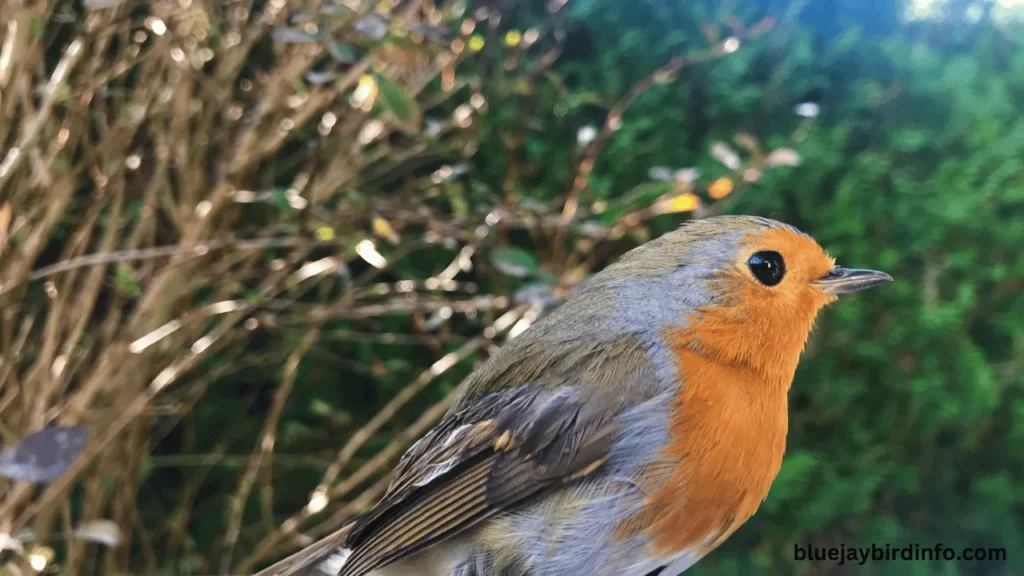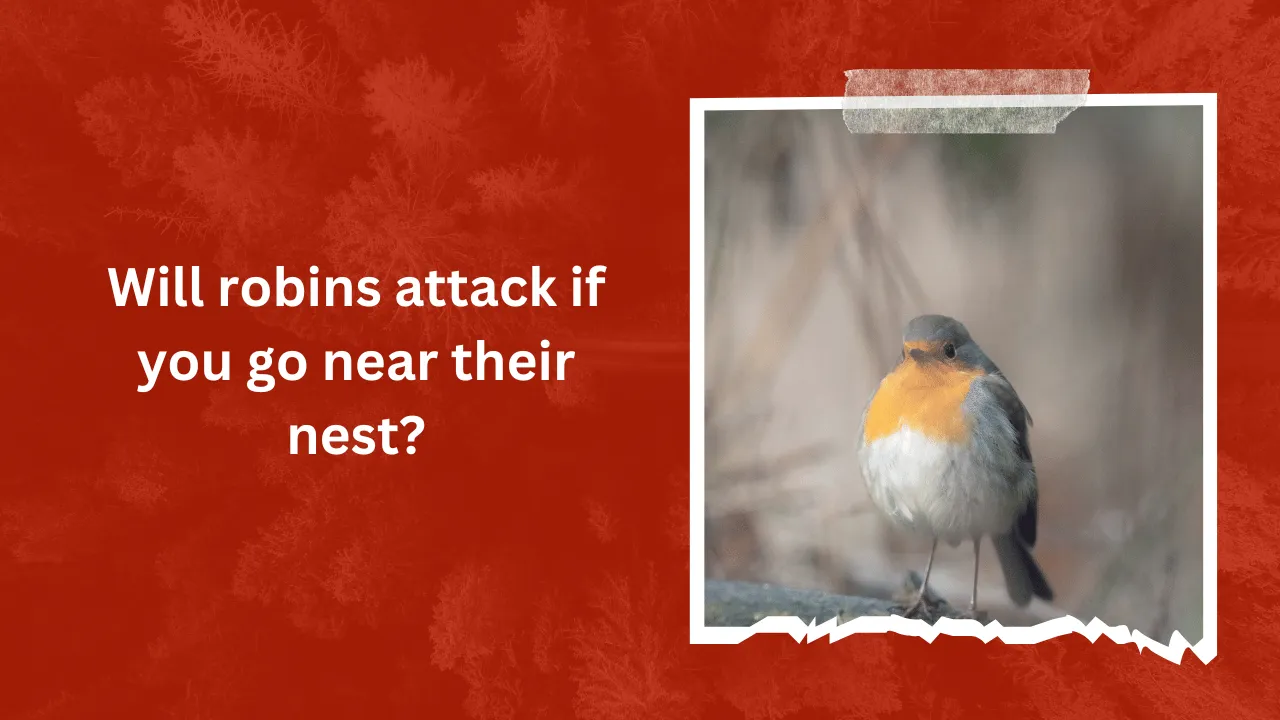Ever ventured into your backyard during springtime, only to be met with a flurry of feathers and frantic chirping?
Chances are, you’ve stumbled upon a Robin’s nest, a tiny haven teeming with precious blue eggs or hungry chicks. While Robins are beloved for their cheerful songs and vibrant red chests, their dedication to parenthood can take a surprising turn.
These seemingly gentle birds can transform into fierce protectors, leaving you wondering: Will they attack me if I go near their nest?
Understanding Robin behavior, particularly their territorial instincts, is crucial for peaceful backyard coexistence. This isn’t just about avoiding a potential “feathery fight;” it’s about protecting these vulnerable young birds and ensuring their successful development.
So, grab a cup of coffee, settle in, and let’s unravel the mystery of Robin aggression and how to navigate your backyard without ruffling any feathers (literally!).
Contents
Territorial Behavior
A territory is a defined area that an animal defends against intrusion by others of its species. Robins are highly territorial, especially during the breeding season.
The size and shape of a Robin’s territory can vary depending on factors such as food availability and population density. Typically, a territory will encompass a suitable nesting site and sufficient foraging grounds.
To defend their territories, Robins employ a variety of aggressive behaviors. These include:
- Singing: Robins use their songs to advertise their territory and deter intruders.
- Posturing: They may puff up their feathers, spread their wings, and adopt a threatening posture.
- Physical Confrontations: In more intense disputes, Robins may engage in physical fights, such as chasing, pecking, and fighting.
Factors Influencing Territoriality
Several factors can influence the intensity of territorial behavior in Robins:
- Breeding Season: Territorial behavior intensifies during the breeding season as Robins compete for nesting sites and mates.
- Food Availability: When food is scarce, Robins may become more territorial, defending smaller territories with richer food resources.
- Population Density: In areas with high population density, competition for territories can be intense, leading to more aggressive behavior.
Aggressive Behaviors
Song and Display: Robins use their songs to advertise their territory and deter intruders. They may also perform threat displays, such as wing-fluttering and tail-fanning, to intimidate rivals.
Physical Confrontations: In more serious disputes, Robins may engage in physical confrontations, such as chasing, pecking, and fighting. These fights can result in injuries, and in rare cases, even death.
Injury and Mortality: While most territorial disputes result in minor injuries, severe confrontations can lead to significant harm or even death.
The Role of Hormones

Hormones play a crucial role in regulating aggressive behavior. Testosterone, in particular, is linked to increased aggression and territoriality. During the breeding season, testosterone levels in male Robins rise, leading to more intense territorial defense.
Seasonal Variations in hormone levels can influence territorial behavior. As the breeding season progresses and testosterone levels decline, territorial aggression may decrease.
Human Interaction and Nest Protection
It’s important to observe Robin nests from a distance to minimize disturbance. Avoid approaching nests too closely, as this can stress the birds and may lead to abandonment.
To protect nests from predators such as cats and squirrels, consider installing physical barriers or deterrents. You can also create a safe nesting environment by planting dense shrubs and trees.
If you encounter an injured or orphaned Robin, it’s best to contact a local wildlife rehabilitator for advice. Avoid handling the bird yourself, as this can cause further stress and injury.
Conclusion
Understanding Robin territorial behavior is essential for appreciating their complex social dynamics. By respecting their territories and minimizing human disturbance, we can coexist peacefully with these fascinating birds.
It’s important to remember that while Robins may exhibit aggressive behavior, they are also gentle creatures that play a vital role in our ecosystems. By protecting their habitats and promoting conservation efforts, we can ensure the survival of these beloved birds.
FAQ’s
Are all Robins equally territorial?
The level of territoriality in Robins can vary depending on factors such as individual temperament, population density, and food availability. Some Robins may be more aggressive than others.
How can I tell if a Robin is defending its territory?
Signs of territorial behavior in Robins include singing, posturing, and aggressive displays, such as chasing and attacking intruders.
Is it safe to approach a Robin’s nest?
It’s best to avoid approaching a Robin’s nest, as this can stress the birds and may lead to aggressive behavior. Keep a safe distance and observe the birds from afar.
What should I do if a Robin attacks me?
If a Robin attacks you, the best course of action is to calmly move away from the nest. Avoid making sudden movements or waving your arms, as this may provoke further aggression.
How can I create a bird-friendly environment in my yard?
To create a bird-friendly environment, you can plant native plants, provide clean water sources, and avoid using harmful pesticides. You can also install birdhouses and feeders to attract a variety of bird species.
What are some common predators of Robins?
Common predators of Robins include cats, snakes, hawks, and owls.








